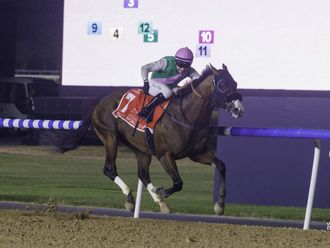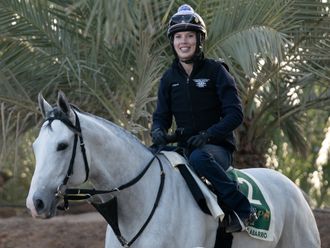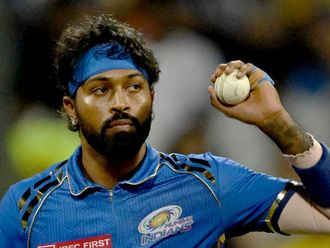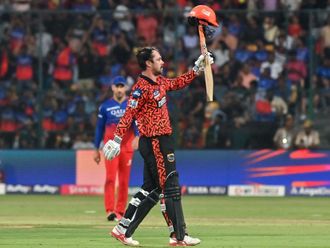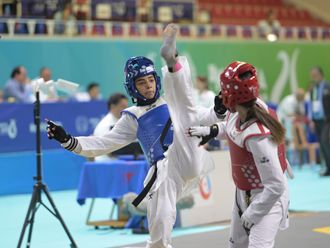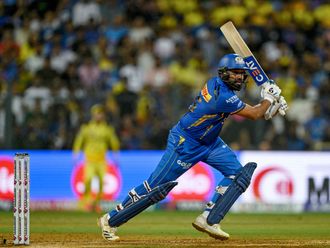Princess Haya Bint Al Hussain |
On the 25th of March, we will celebrate the running of the Dubai World Cup, a horse race that hosts some of the best horses in the world running in a country with a great heritage tradition in this sport.
Many people love to attend and follow this race, but many also want to know more simple things that would make their day at the races more exciting and informed.
Often there are questions that may seem too basic to ask, and the books and accounts on horse racing are too specific and purist-based to explain to a newcomer what this incredible sport is all about. In a countdown of articles that will run the week up to the Dubai World Cup I hope that my words will help share the sport with a greater audience.
At its simplest, horse racing is a contest to decide whose horse is the fastest. The multibillion-dollar Thoroughbred racing industry that we know today came from humble beginnings some 300 years ago.
The sport was built around a new breed of horse, the Thoroughbred. This breed is directly descended from three Purebred Arabian Horses: The Godolphin Arabian, the Darley Arabian, and the Byreley Turk.
Every racehorse in the modern sport of racing has its own breeding papers, and a passport that traces its ancestry back to these three horses that come from our desert.
It is a pastime that has captured the imagination of millions of people from all walks of life, and I am among them.
Horse racing is an industry, a sport, and an art. But global scale aside, its essence lies within the most regal of animals, one that has worked alongside humanity through the ages. Our world has been shaped in so many respects by the horse.
Driven by ambition
The sport of modern horse racing takes place in various forms across the globe, from its heartland on the historic tracks of England to the barren outback of Australia and the vast steppes of Mongolia.
Everyone involved with a racehorse is driven by ambition, from the breeders who watch a newborn foal take its first tentative steps to the owners and trainers working to turn the young horses into what they hope will be a race-winning athlete.
It is this dream that has drawn people and Thoroughbred horses to our country for one of the world’s showcase racing events, the Dubai World Cup.
In only a few years it has become one of the most coveted races for racehorse owners and trainers.
Indeed, it is the pinnacle of racing achievement for a horse to make the field of this prestigious race.
Racing is an industry that employs thousands globally. It has a unique sporting heritage and is steeped in tradition. However, it is also a business which must prove sustainable for its long-term success.
Broadly, the industry is composed of racehorse breeders, owners, trainers, jockeys, and regulators with, of course, a myriad of support staff and legions of fans.
Bloodstock industry
Breeders operate in what is more commonly called the bloodstock industry, with the interests of His Highness Shaikh Mohammad Bin Rashid Al Maktoum, Vice-President and Prime Minister of the UAE and Ruler of Dubai, represented globally by the Darley brand.
Breeders produce foals through carefully judged matings. These youngsters are generally sold at an auction when around a year old.
The best-bred yearlings can command large sums. These horses are bought by individuals, or groups organised into syndicates, with the intention of having them trained and raced.
These youngsters generally enter training as two-year-olds, when they become the day-to-day responsibility of the trainer. They are introduced to riding and the paraphernalia of racing, ranging from the riding gear to the starting gates at the racetrack.
Trainers take responsibility for the exercising, feeding and housing of the horses, as well as organising appropriate health care. The owners pay the bills and often help dictate where the horses will run and how they will be produced. Race meetings will often feature contests that cater to these inexperienced horses. We all have to start somewhere, after all.
The most talented horses grow in status and value, competing in races for higher prize money. The majority of this money goes to the first place-getter, with horses finishing lower down the order receiving lesser sums.
This prize money, referred to as stakes, comes from two main sources — sponsorship and money channelled back through the industry.
Race sponsors will usually get naming rights, enjoying the exposure that goes with it.
Races are invariably broadcast on radio and television. Bigger events enjoy international exposure.
Owning and training a racehorse is expensive. However if approached properly it is also an industry that can make money for those involved.
Indeed, your typical racehorse owner may struggle to make a profit. However, most are in it for the enjoyment and thrill of seeing their horses race.
But at the heart of it all remains the dream that perhaps their horse will bloom into a world champion, earning millions in prize money, growing in value, in addition to the honour linked with owning a horse of this calibre.
Stallions with a successful track career can retire to command handsome returns in stud fees, while good racing mares will be in demand for breeding.
The regulators have a central role, too. They must ensure that the industry is structured and managed in a way that is fair to all.
There are strict regulations around what owners, trainers and jockeys can do and these are strictly enforced.
Even-handed regulation is also important to ensure that those who bet on races are not disadvantaged.
The final key group are the racing fans and (in the West) bettors. The traditional business model in racing channels a share of betting income back to the industry to support racing.
This is seen as only fair, given that the industry provides the product upon which people can bet.
Governments (in the West) take a share of the betting revenue, too, so politicians are generally happy to provide some income to the industry to keep it healthy.
Family-friendly sport
The UAE, of course, does not follow this traditional model, given that we do not allow gambling.
The result is a family-friendly, accessible sport, where people come for the entertainment, or to indulge their love of horses.
Unlike some racing countries, it is free to go to regular race meetings in the UAE, making it an inexpensive family day out.
It buoys my spirit to see our showpiece racetrack, Meydan, brimming with people for the World Cup Carnival. It reminds me of the progress we have made in such a short time. It is a fitting chapter in the story of our nation.
International challenges
Modern-day racing has its international challenges. Overseas, its long-term reliance on income from betting has come under pressure as people face ever-wider choices over the sports on which they can wager.
We are fortunate to have taken a different path. Support for the industry is strong and it will endure.
By international standards, we provide good returns to racehorse owners by way of prize money.
We have an advantage, in my view. The important part that horses have played in our Bedouin roots has been ingrained in our souls.
Our cities may soar skyward and our highways fill with traffic, but the Emirati people will, I believe, always have an affinity with the horse.
It is fitting that the magnificent Thoroughbred breed owes its very origins to our fine desert Arabian horses.
While the breed and the multibillion-dollar industry it spawned has its roots in Britain, bringing Thoroughbred racing to the UAE is, I believe, a fitting nod to our equally rich equestrian heritage.
Princess Haya Bint Al Hussain is Chairman of the Board at the Dubai International Humanitarian City, Member of International Olympic Committee as UAE Representative, UN Messenger of Peace , Chairperson of Sports Accord Dubai 2010, Chairperson of UAE Nursing and Midwifery Council.


